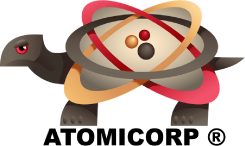|
0 members (),
949
guests, and
28
robots. |
|
Key:
Admin,
Global Mod,
Mod
|
|
S |
M |
T |
W |
T |
F |
S |
|
|
1
|
2
|
3
|
4
|
5
|
6
|
|
7
|
8
|
9
|
10
|
11
|
12
|
13
|
|
14
|
15
|
16
|
17
|
18
|
19
|
20
|
|
21
|
22
|
23
|
24
|
25
|
26
|
27
|
|
28
|
29
|
30
|
31
|
|
|
|
|
There are no members with birthdays on this day. |

#29638
Tue 27 Jun 2006 12:50:AM
|
Joined: Feb 2001
Posts: 3,536
Mission Commander
|
OP

Mission Commander
Joined: Feb 2001
Posts: 3,536 |
June 26, 2006<br /><br />Dolores Beasley/Mike Braukus<br />Headquarters, Washington<br />Phone: (202) 358-1600/1979 <br /><br />RELEASE: 06-249<br /><br />EXPLORATION SYSTEMS PROGRESS REPORT<br /><br />NASA engineers are in the midst of a new series of tests that will aid <br />development of the agency's future space transportation systems. <br /><br />The tests support development and integration of the Crew Launch <br />Vehicle, Crew Exploration Vehicle and Cargo Launch Vehicle under the <br />Constellation Program. The program is developing both crew and launch <br />vehicles for NASA's plan to return humans to the moon, Mars and <br />destinations beyond. <br /><br />Since June, engineers at the Marshall Space Flight Center's <br />Aerodynamic Research Facility in Huntsville, Ala., have conducted 80 <br />wind-tunnel runs on a partial model of the Crew Launch Vehicle. The <br />model includes a portion of the upper stage, the spacecraft adapter, <br />the Crew Exploration Vehicle and the launch abort system. The abort <br />system is designed to lift the crew clear of the propulsion stack <br />before or during launch in the event of an emergency. <br /><br />The tests use a 13-inch-long, 1.5 percent scale model in a <br />14-by-14-inch cross section wind tunnel to simulate how proposed <br />vehicle shapes perform in flight. In the test tunnel, giant fans or <br />high-pressure air generate artificial wind that flows over <br />scale-model vehicles, engines or rockets through a wide speed range. <br />The tests are being conducted between Mach 0.8 and Mach 4.45, or <br />about 600 to 3,300 miles an hour. Engineers use this flow <br />visualization to analyze shock waves and flow expansion <br />characteristics of components before their designs are incorporated <br />into space hardware. <br /><br />This series is the latest step in a progression of wind tunnel tests <br />that began in February. They are part of a coordinated partnership <br />among NASA field centers and industry to set the foundation for <br />design and development of the Crew Exploration Vehicle and Crew <br />Launch Vehicle as an integrated system. This partnership includes <br />Marshall; Langley Research Center, Hampton, Va.; Ames Research <br />Center, Moffett Field, Calif.; and Boeing at St. Louis, Mo. <br /><br />Additional configuration tests are planned through July in the wind <br />tunnel at Marshall. Those tests will serve as a foundation for more <br />detailed launch vehicle design testing in the fall. <br /><br />Engineers at Marshall also have completed preliminary tests of an <br />"augmented spark igniter," a critical engine component needed for <br />in-flight ignition of liquid hydrogen and liquid oxygen propellants <br />that mix and burn in engine combustion chambers. <br /><br />The test apparatus and a similar igniter will be used in development <br />of the J-2X upper stage engine, an updated version of the powerful <br />engine used to power the Saturn V rocket upper stages during the <br />Apollo Program. The J-2X is planned for use in both the Crew Launch <br />Vehicle's upper stage and the Cargo Launch Vehicle's Earth Departure <br />Stage. The dual-use J-2X engine is an example of common hardware <br />designed to simplify ground processing and reduce recurring operation <br />costs. <br /><br />During the igniter tests, engineers integrated the igniter assembly - <br />spark plugs, propellant injectors and tube-like ignition torch - and <br />fired it into a vacuum chamber. This simulated the conditions the <br />Crew Launch Vehicle's upper stage will experience when activated in <br />low-Earth orbit. Future tests will chill propellants to minus 260 <br />degrees Fahrenheit prior to injection to simulate conditions between <br />Earth and the moon, where the J-2X will be used to power the Earth <br />Departure Stage. <br /><br />Preliminary analysis showed the test igniter operated as expected. <br />Detailed analysis is continuing.<br /><br />Crew Launch Vehicle and Cargo Launch Vehicle development efforts <br />include multiple project element teams at NASA centers and contract <br />organizations around the nation. These efforts are led by the <br />agency's Exploration Launch Projects Office at Marshall. The office <br />is part of the Constellation Program, hosted by NASA's Johnson Space <br />Center, Houston. Constellation is a key program of NASA's Exploration <br />Systems Mission Directorate in Washington. <br /><br />For information about NASA's exploration efforts on the Web, visit:<br /><br /> http://www.nasa.gov/exploration <br /><br />For information about NASA and agency programs on the Web, visit:<br /><br /> http://www.nasa.gov/home
|
|



CMS The Best Conveyancing solicitors conveyancing quotes throughout the UK
For any webhosting enquiries please email webmaster@aus-city.com
|
|
Forums60
Topics752,976
Posts787,666
Members2,958
| |
Most Online12,408
Dec 19th, 2025
|
|
|